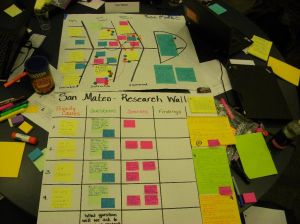On a recent hot walk to build up my endurance for the Maine Half-Marathon in October, I heard an interview on The New Yorker Radio Hour with a musician who was new to me, Regina Spektor. When asked by the host, about how and where she composes her music, Regina’s way of working rang my bells personally and professionally. Regina described how artist friends of hers have a daily routine with set times when they enter their studio or writing nook and lay down the notes or words leading to a new composition. While she admires their discipline and what it leads to, she was quick to describe how her creativity isn’t regimented by the clock. Her creations come from INSPIRATION, when something she observes, hears, or experiences, provides the germination of a new composition. On a personal level, when it comes to writing, I’ve always envied those who set their alarms, and write. Doesn’t work for me. I have to be inspired and then I grab my phone to enter quick notes until I can get to my computer or iPad. Inspiration from whatever source always leads to threads going off in multiple directions as did the inspiration from this interview.
Our work for many years at the Using Data Project, now Using Data Solutions, has been to help teacher teams learn how to analyze student data both formal and informal in order to plan and adjust instructional strategies. A foundational cornerstone of Collaborative Inquiry relies on principals and department heads creating schedules that provide teacher teams regular time everyday / week to analyze results and plan instruction. Schools that invest in this practice begin to see the needle move upward as their students begin to “get it” at higher rates and with deeper understanding. This is the discipline that leads to growth gains, many of which come when teachers are inspired to try new strategies or fill gaps in the curriculum until they find the pieces that work. And yes, data can be inspiring. It can reveal patterns or trends un-anticipated. Or a colleague’s comment during the team meeting, can inspire a new line of thinking. But this is a discipline.
Let’s consider the other part of this discipline. Team meeting is a daily, weekly, sometimes bi-weekly scheduled working session. There’s preparation involved to collect and share the data to be analyzed. There is a routine protocol for taking the data discussion to new levels. And it works. We have years of evidence to support this discipline. But let’s not overlook the other sources of inspiration and how they too, shine a light on new pathways. In a recent EdWeek article (What Teachers Love Most About Their Jobs and Why by Madeline Will, July 31, 2023), teachers noted where even in the difficult times they’ve just lived through, their joy comes from what happens in the classroom. It’s seeing students’ aha moments – “I got this!”. it’s observing a student engaging and experiencing something they didn’t think was possible. It’s hearing students begging for one more chapter to be read, or a teacher constructing learning and seeing it evolve as students take hold of it.
We never want the discipline and routine of PLCs or Data Team Meetings to be perceived as “just one more thing”, a drudgery to be endured. Inspiration comes in many forms and data team meetings should include the informal, observational data that brought joy to a teacher and is just as valid as all of the interim assessment’s charts and graphs or student work showing student progress. Data Team meetings should collect and chart the impacts of teachers’ intuition and experience that leads their instruction in a different direction. If the intuition was off center or the experience was missing an element, the data will be revealing, just as it will be when the teacher’s intuition was right on target. Inspiration comes differently to us all. Let’s recognize and value it however it comes.








